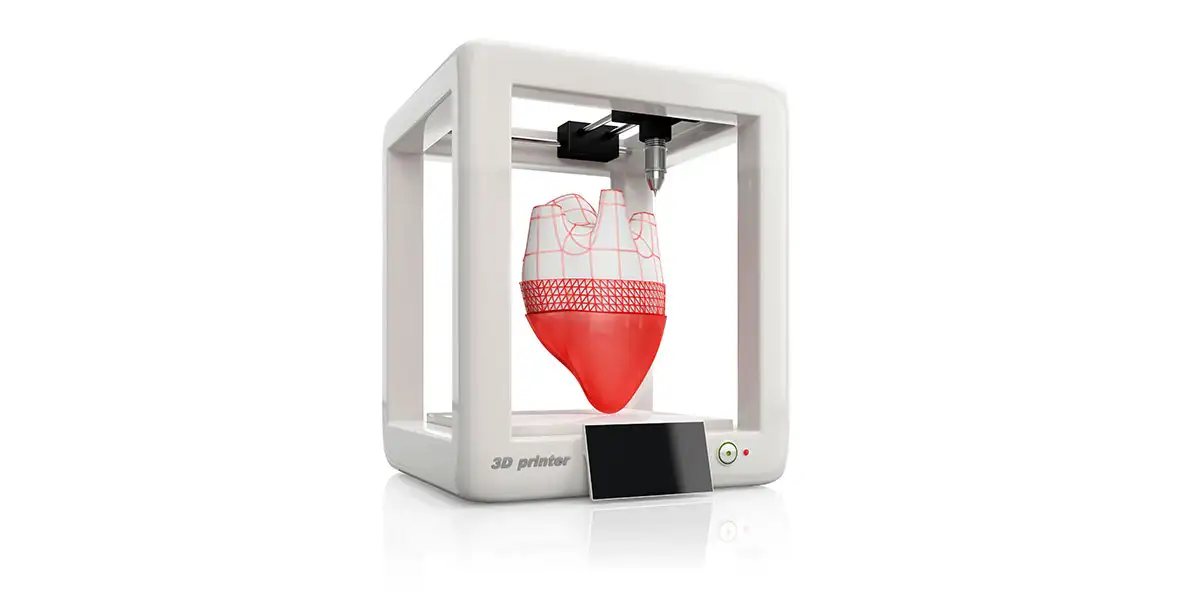We recently sat down with our analyst John Bergin to speak about the past, present and future of
bioprinting. Vegans take note!
What are some of the obstacles that have slowed the progress towards bioprinting gaining wider traction?
One of the larger future opportunities for bioprinting is for organ replacement. This is an exciting application, but several technical barriers need to be overcome before it can reach reality. Presently, there are not enough organ donors to meet the needs, and many people are dying each day due to lack of implants.
One of the technical challenges for bioprinted organs is achieving 3D architecture of the organ to incorporate vascular networks into the bioprinted construct. Vascular networks are important for printing thicker layers of tissues needed for organs. Vascularity provides needed oxygen and nutrients to cells and removes waste from those cells, particularly those cells located in the interior of the organ structure.
Have any of these been overcome in recent years? What is left to overcome?
The Lawrence Livermore National Laboratory (LLNL) has made progress in addressing this technical barrier, by
printing tubes using human primary cells and biomaterials. Nutrients are available to the surrounding 3D printed environment, and capillaries connect to the printed tubes to deliver these nutrients. This method leverages natural processes to construct the detailed features of the printed tissue.
Another technical challenge is that bioprinters themselves need to be improved in order for organ bioprinting to become viable. In particular, printers should be able to print out both cell- and biomaterial-containing inks at the same time, as well as be able to maintain the viability of the living cells during and after the printing process.
We’ve heard of recent progress in in how we are learning to ‘trick’ the immune system into accepting bioprinted organic matter- can you elaborate on any success that has been achieved in this area?
One approach is to use the patient’s own stem cells to generate the bioprinting ink. The use of human induced pluripotent stem cells (hiPSCs) is an emerging area in the bioprinting field. hiPSCs allow for printing of autologous cells from the patient. One of the tricks to making this technology work is that the printing process must be gentle enough to print human pluripotent stem cells while either still maintaining their pluripotency or directing their differentiation into desired cell lineages. This is an active area of research today.
Switching gears, how do you see governmental interest influencing research in bioprinting?
Governments are driving up the interest in bioprinting because of their bans or restrictions on animal testing. In 2013 the European Union
banned animal testing, and this mandate spurred research in bioprinting to develop suitable non-animal testing models. Bioprinted skin constructs are useful because they can closely mimic the behavior of real skin.
Since the action by the EU, multiple other countries have either banned or introduced proposals aimed at banning animal testing for cosmetics, so this has been a big driver.
The military is also very interested in organ-on-chip systems for testing responses to chemical, biological or radiological threats.
What is the biggest growth opportunity for this field? Who will benefit?
The largest growth opportunity for bioprinting is in regenerative medicine. The market includes procedures to graft larger scale bioprinted tissue onto the human body, such as in the case of a severe burn. Other applications include orthopedic, cardiovascular and craniofacial.
The in vitro testing market is another opportunity area with good growth potential. This includes 3D bioprinted cell culture models that have a range of applications in, for example, drug screening (e.g., predictive toxicology, ADME and drug metabolism studies).
There should also be high growth for the picks and shovels sustaining the field – the printers and the inks. The timeframe covered in
this report is somewhat too adumbrated to truly reflect this opportunity, but the rewards for creating a universal Bioink, in particular, appear substantial.
What will the industry look like 10 years from now?
Organ replacement is a long-term goal of this industry, although there are many technical hurdles to overcome, including the aforementioned need to introduce vascularity into bioprinted structures.
Current notorious failures make good candidates for future successes, such as bioprinted intestines. Also, 4D bioprinting has surfaced recently where printed objects can change shapes or function after an external stimulus is imposed, or when cell fusion or postprinting self-assembly occurs.
Progress toward fully functional bioprinted organs that can be transplanted into humans will likely take a step-wise approach. Among the first milestones along this path is being able to print organ-like structures with living cells, followed by implanting such structures into an animal. This step has now been accomplished by several groups, including the
Wake Forest Institute for Regenerative Medicine and
3D Bioprinting Solutions (Russia). Further progress should enable this application to become a reality, possibly in the ten-year timeframe you referenced!
Other applications beyond regenerative medicine, like
growing leather without an animal or bioprinted meat, are being worked on by at least one company. The technology is progressing to enable these applications, and the main question will be, will there be strong consumer demand given the main selling points of no animals used and low inputs of land, water, energy and chemicals? These products will need to compete with well-established products produced from animals and so the main commercial issue seems to be from a market need perspective rather than a technology one. This is just the opposite of the organ transplant opportunity, where there is a strong, unfilled market need, but the technology needs to catch up.



